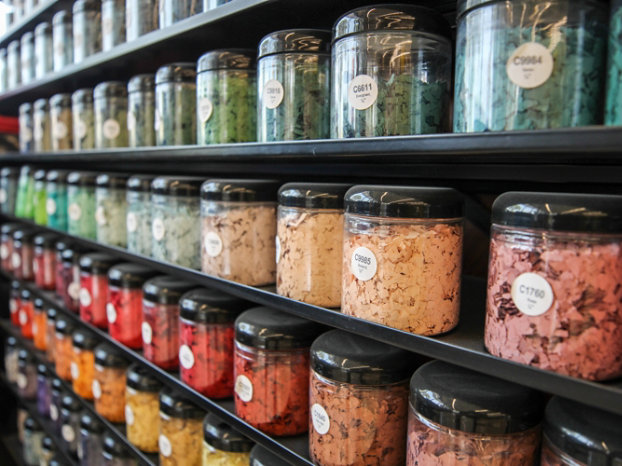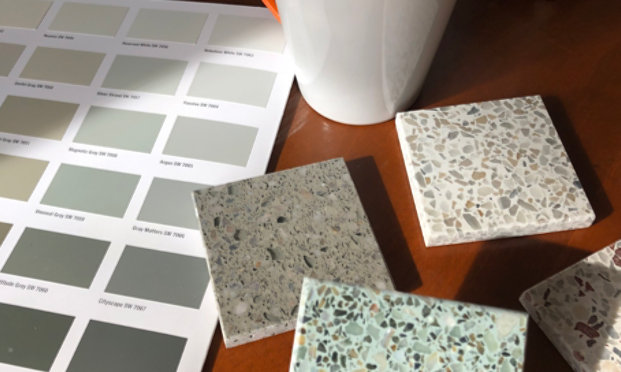|
Original Name
409 Pre-Kote Cleaner
|
New Name
Order through Sherwin-Williams store
|
|
Original Name
Eco-Crete CB
|
New Name
FasTop Multi Cove Base
|
|
Original Name
Eco-Crete IF
|
New Name
Contact Representative
|
|
Original Name
Eco-Crete MF
|
New Name
FasTop Multi / PolyCrete SLB
|
|
Original Name
FasTop Multi /
|
New Name
PolyCrete MD
|
|
Original Name
Eco-Crete SL
|
New Name
FasTop Multi / PolyCrete SLB
|
|
Original Name
100 Solvent
|
New Name
Contact Representative
|
|
Original Name
ChemXP Line
|
New Name
Contact Representative
|
|
Original Name
Colorants / Florock Colorants
|
New Name
High Performance Flooring Universal Colorants
|
|
Original Name
CRU
|
New Name
Resutile 4638 / HPS 100
|
|
Original Name
Eco-CEP White with MPE B
|
New Name
Resuflor 3746
|
|
Original Name
Eco-Crete HF
|
New Name
FasTop Multi / PolyCrete HF
|
|
Original Name
Eco-CRN
|
New Name
Resuflor CRN
|
|
Original Name
Eco-DSP
|
New Name
Resuprime DSP
|
|
Original Name
Eco-DSS
|
New Name
Resuflor DSS
|
|
Original Name
Eco-DSS COVE
|
New Name
Resuflor DSS Cove
|
|
Original Name
Eco-ECE
|
New Name
Resuflor 3424 + 3725
|
|
Original Name
Eco-EJF
|
New Name
Resudeck EJF
|
|
Original Name
Eco-FLA Clear
|
New Name
Resudeck FLA
|
|
Original Name
Eco-FLB
|
New Name
Resudeck FHS
|
|
Original Name
Eco-FLEX
|
New Name
Resuflor Flex
|
|
Original Name
Eco-FLI Light Gray
|
New Name
Resudeck FLI
|
|
Original Name
Eco-FLM
|
New Name
Resudeck FLP/M
|
|
Original Name
Eco-FLP-E
|
New Name
Resudeck FLP/E
|
|
Original Name
Eco-FLP-U
|
New Name
Resudeck FLP/U
|
|
Original Name
Eco-FLS
|
New Name
Contact Representative
|
|
Original Name
Eco-FLT
|
New Name
Contact Representative
|
|
Original Name
Eco-GPE
|
New Name
Resuflor GPE
|
|
Original Name
Eco-Hard-N-Seal
|
New Name
Contact Representative
|
|
Original Name
Eco-HPS 100
|
New Name
Resutile HPS 100
|
|
Original Name
Eco-HTS 100
|
New Name
Resutile HTS 100
|
|
Original Name
Eco-MPE
|
New Name
Resuflor MPE
|
|
Original Name
Eco-MVB
|
New Name
Resuprime MVB
|
|
Original Name
Eco-PJF
|
New Name
Resudeck PJF
|
|
Original Name
Eco-PT
|
New Name
Resuflor MPE + PT Aggregate
|
|
Original Name
Eco-PT Topcoat
|
New Name
Resuflor PT 250 Topcoat
|
|
Original Name
Eco-RCE
|
New Name
Resuflor RCE
|
|
Original Name
Eco-SCT
|
New Name
Resuflor SCT
|
|
Original Name
Eco-SDS Satin
|
New Name
Resutile SDS
|
|
Original Name
Eco-TCU
|
New Name
Elladur 4850 / 4844
|
|
Original Name
Eco-UVE
|
New Name
Resuflor UVE
|
|
Original Name
Eco-UVS
|
New Name
Contact Representative
|
|
Original Name
Elastomer 6500
|
New Name
Contact Representative
|
|
Original Name
FLB
|
New Name
Resudeck FLB
|
|
Original Name
FLB Accelerator
|
New Name
Contact Representative
|
|
Original Name
FloroBuild
|
New Name
Resuflor MPE + PT Aggregate
|
|
Original Name
FloroBuild 4755
|
New Name
Resuflor MPE / RCE / 3561
|
|
Original Name
FloroBuild PT Power Troweling Aggregate Blend
|
New Name
Resuflor PT 250 Aggregate
|
|
Original Name
FloroBuild XT Mortar Resin
|
New Name
Resuflor MPE / RCE / 3561
|
|
Original Name
FloroBuild XT Steel, Medium/Fine
|
New Name
Malleable Aggregate 5326 - Order through Sherwin-Williams Stores
|
|
Original Name
FloroCrete Catalyst
|
New Name
Contact Representative
|
|
Original Name
FloroCrete Cove
|
New Name
FasTop Multi Cove Base
|
|
Original Name
FloroCrete HD 3.0
|
New Name
FasTop HD 3.0 + HD Aggregate
|
|
Original Name
FloroCrete P 3.0
|
New Name
FasTop Multi T100
|
|
Original Name
FloroCrete Powdered Colorant
|
New Name
High Performance Flooring Universal Colorants
|
|
Original Name
FloroCrete RT 3.0
|
New Name
FasTop RT 3.0 + RT Aggregate
|
|
Original Name
FloroCrete SLX 3.0
|
New Name
FasTop SLX 3.0 + SLX Aggregate
|
|
Original Name
FloroEster Line
|
New Name
Contact Representative
|
|
Original Name
FloroGel Patch
|
New Name
Resuflor 3513
|
|
Original Name
FloroPoxy 4700
|
New Name
Resuflor MPE / RCE / Resuprime 3579
|
|
Original Name
FloroPoxy 4805
|
New Name
Resuflor MPE / 3746 / 3569
|
|
Original Name
FloroPoxy 4821
|
New Name
Resuflor UVE
|
|
Original Name
Resuflor PT 250 Topcoat
|
New Name
Resuflor PT 250 Topcoat
|
|
Original Name
FloroPoxy 4900
|
New Name
Resuflor 3569
|
|
Original Name
FloroPoxy 4900V High Viscosity
|
New Name
Resuflor 3746G / PT 250 Topcoat
|
|
Original Name
FloroPoxy 4905 Fast Cure
|
New Name
Resuflor RCE
|
|
Original Name
FloroPoxy 4905 Standard Cure
|
New Name
Resuflor MPE / UVE / 3569
|
|
Original Name
FloroPoxy CON
|
New Name
Resuflor 3424 + 3725
|
|
Original Name
FloroPoxy ESD
|
New Name
Resuflor SDE OR SCT???
|
|
Original Name
FloroPoxy MVT
|
New Name
Resuprime MVB
|
|
Original Name
FloroPoxy MVT-99
|
New Name
Resuprime MVB
|
|
Original Name
FloroPoxy Novolac
|
New Name
Resuflor CRN / 3741
|
|
Original Name
FloroSpartic 340
|
New Name
Elladur 340
|
|
Original Name
FloroSpartic 5
|
New Name
Elladur 5
|
|
Original Name
FloroSpartic Zero
|
New Name
Elladur 4850 / 4844
|
|
Original Name
FloroStone Cove
|
New Name
Resuflor DSS Cove
|
|
Original Name
FloroStone
|
New Name
Resuflor DSS
|
|
Original Name
FloroTallic Coating
|
New Name
Resuflor MPE + Metallic Pigment
|
|
Original Name
FloroThane MC 100
|
New Name
Resutile MC 100
|
|
Original Name
FloroThane MC/HT Gloss
|
New Name
Resutile MCHT Gloss
|
|
Original Name
FloroThane MC/HT Satin
|
New Name
Resutile MCHT Satin
|
|
Original Name
FloroWear 7100
|
New Name
Resutile HTS 100 / MCHT Satin
|
|
Original Name
GP TPM-QP / FloroSurface Patch
|
New Name
Cemlack QP Quick Patch
|
|
Original Name
GP TPM-TP / FloroSurface Prime
|
New Name
Cemlack TP Thin Patch
|
|
Original Name
MMA Accelerator
|
New Name
Contact Representative
|
|
Original Name
MMA Body Coat
|
New Name
Acrydur MMA Bodycoat
|
|
Original Name
MMA Body Coat Filler
|
New Name
Acrydur MMA Bodycoat Filler
|
|
Original Name
MMA Catalyst
|
New Name
Acrydur MMA Catalyst
|
|
Original Name
MMA Cold Body Coat
|
New Name
Acrydur MMA Cold Bodycoat
|
|
Original Name
MMA Indoor/Outdoor Topcoat
|
New Name
Acrydur MMA Indoor/Outdoor Topcoat
|
|
Original Name
MMA Primer
|
New Name
Acrydur MMA Primer
|
|
Original Name
MMA Topcoat
|
New Name
Acrydur MMA Topcoat
|
|
Original Name
ReVue-CLN128 / CLN256
|
New Name
Contact Representative
|
|
Original Name
ReVue-CRM / GP TPM-MTR
|
New Name
Cemlack MTR Repair Mortar
|
|
Original Name
ReVue-DCLN
|
New Name
Contact Representative
|
|
Original Name
ReVue-DP11800 / DP111500 / DP113000
|
New Name
Contact Representative
|
|
Original Name
ReVue-DP14800 / DP141500 / DP143000
|
New Name
Contact Representative
|
|
Original Name
ReVue-DP16800 / DP161500 / DP163000
|
New Name
Contact Representative
|
|
Original Name
ReVue-DP18800 / DP18800 / DP181500 / DP183000
|
New Name
Contact Representative
|
|
Original Name
ReVue-DP20800 / DP201500 / DP203000 / DP27800
|
New Name
Contact Representative
|
|
Original Name
ReVue-DP271500
|
New Name
Cemlack DP271500
|
|
Original Name
ReVue-DP273000
|
New Name
Cemlack DP273000
|
|
Original Name
ReVue-FFHDS7100 / FFHDS7200 / FFHDS7400
|
New Name
Contact Representative
|
|
Original Name
ReVue-HYB100
|
New Name
Cemlack HYB100
|
|
Original Name
ReVue-HYB200
|
New Name
Cemlack HYB200
|
|
Original Name
ReVue-HYB30/HYB50
|
New Name
Contact Representative
|
|
Original Name
ReVue-HYB400
|
New Name
Cemlack HYB400
|
|
Original Name
ReVue-HydroCut
|
New Name
Cemlack Hydrogrind
|
|
Original Name
ReVue-HydroDense
|
New Name
Cemlack Densifier
|
|
Original Name
ReVue-HydroGard
|
New Name
Cemlack Guard
|
|
Original Name
ReVue-HydroRock
|
New Name
Cemlack SS Slurry Solidifier
|
|
Original Name
ReVue-PHN1500
|
New Name
Cemlack PHN1500
|
|
Original Name
ReVue-PHN3000
|
New Name
Contact Representative
|
|
Original Name
ReVue-PHN400
|
New Name
Cemlack PHN400
|
|
Original Name
ReVue-PHN800
|
New Name
Cemlack PHN800
|
|
Original Name
ReVue-Repel
|
New Name
Cemlack Repel
|
|
Original Name
ReVue-SLM / GP TPM-SL / FloroSurface Underlay
|
New Name
Cemlack SL Self-Leveling
|
|
Original Name
ReVue-SP100
|
New Name
Cemlack SP100
|
|
Original Name
ReVue-SP400
|
New Name
Cemlack SP400
|
|
Original Name
ReVue-TSR100
|
New Name
Cemlack TSR 100
|
|
Original Name
ReVue-TSR16
|
New Name
Contact Representative
|
|
Original Name
ReVue-TSR30
|
New Name
Cemlack TSR 30
|
|
Original Name
WearGuard 240 Gloss
|
New Name
ArmorSeal Rexthane I
|
|
Original Name
WearGuard-240 Satin
|
New Name
ArmorSeal Rexthane I + Satinizing Powder
|



